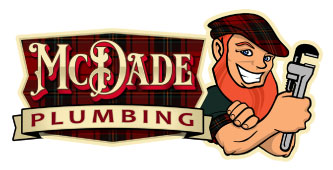Plumbing is an essential aspect of any home, and it is what makes our homes comfortable and habitable. Residential plumbing refers to the installation, maintenance, and repair of the pipes and fixtures that supply water and gas into our homes, as well as the drainage system that takes away wastewater. In this article, we will discuss everything you need to know about residential plumbing.
A residential plumbing system consists of various pipes and fixtures that carry water into and out of a home. The main water supply line typically enters the house through the foundation or basement wall and connects to the main shut-off valve. From there, it branches out to supply water to various parts of the house, such as the kitchen, bathroom, and laundry room.
The hot water supply line is usually connected to a water heater, which heats the water and sends it through the hot water supply pipes to the fixtures in the house. Drainage pipes, also known as waste pipes, carry wastewater and sewage away from the house and into the sewer or septic system.
Each fixture in the house, such as a sink, toilet, shower, or bathtub, has its own set of supply and drainage pipes. The supply pipes are responsible for bringing clean water to the fixture, while the drainage pipes remove wastewater from the fixture and send it to the main drain line.
The main drain line connects to the sewer or septic system and is typically located underground. It may be accessed through a clean-out, which is a pipe with a removable cap that allows for easy access to the main drain line in case of a clog.
Overall, residential plumbing systems can be quite complex and require professional installation and maintenance to ensure proper functionality and safety.
Types of Residential Plumbing
There are two types of residential plumbing: supply plumbing and drain-waste-vent (DWV) plumbing. Supply plumbing is responsible for bringing water into your home, while DWV plumbing is responsible for taking away wastewater.
Supply Plumbing
Supply plumbing brings clean water into your home, which is used for drinking, cooking, cleaning, and bathing. It consists of a network of pipes that run from the water main to the various fixtures and appliances in your home. The most common materials used for supply plumbing are copper, PEX, and CPVC.
Copper pipes are durable, long-lasting, and resistant to corrosion. They are ideal for hot and cold water supply lines, and they can last up to 50 years or more. PEX pipes are flexible, easy to install, and affordable. They are ideal for cold and hot water supply lines and can last up to 25 years. CPVC pipes are also affordable, easy to install, and ideal for hot and cold water supply lines. They can last up to 50 years.
DWV Plumbing
DWV plumbing is responsible for taking away wastewater from your home. It consists of a network of pipes that run from the various fixtures and appliances in your home to the sewer or septic system. The most common materials used for DWV plumbing are PVC and ABS.
PVC pipes are durable, long-lasting, and resistant to corrosion. They are ideal for drainage and venting systems and can last up to 50 years or more. ABS pipes are also durable and long-lasting. They are ideal for drainage systems and can last up to 50 years.
Plumbing Fixtures
Plumbing fixtures are the devices that deliver and drain water in your home. They include faucets, sinks, toilets, showers, bathtubs, and appliances such as washing machines and dishwashers.
Faucets
Faucets are the devices that deliver water to your sink, bathtub, or shower. They come in a variety of styles and finishes, including chrome, brass, nickel, and stainless steel.
Sinks
Sinks are the devices that hold water and drain wastewater in your kitchen or bathroom. They come in a variety of styles, sizes, and materials, including stainless steel, porcelain, and granite.
Toilets
Toilets are the devices that flush away wastewater from your bathroom. They come in a variety of styles, including one-piece, two-piece, and wall-mounted toilets.
Showers and Bathtubs
Showers and bathtubs are the devices that deliver water for bathing. They come in a variety of styles and materials, including acrylic, fiberglass, and ceramic.
Appliances
Appliances such as washing machines and dishwashers are also connected to your residential plumbing system. They require both supply plumbing and DWV plumbing connections.
Maintenance and Repair
Residential plumbing systems require regular maintenance to ensure they function properly. Some of the maintenance tasks include:
- Checking for leaks in pipes and fixtures
- Flushing your water heater annually
- Inspecting your sewer line for blockages
- Cleaning your drains regularly
- Checking your water pressure
If you notice any signs of plumbing problems, such as slow draining sinks, low water pressure, or foul odors, you should contact a professional plumber immediately. Plumbing problems can lead to water damage, mold growth, and other issues if left unaddressed.
Conclusion
Residential plumbing may differ from Commercial Plumbing in a lot of ways, but it's just as important to have an expert that has experience in Residential Plumbing. Having a seasoned professional undertand how and why home plumbing needs are different than commercial plumbing will save you time and money.

